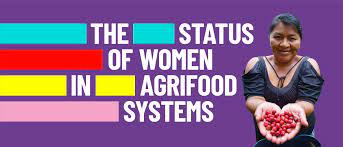FAO Report on The Status of Women in Agrifood Systems

The Status of Women in Agrifood Systems: FAO Report: This report is the first of its sort since the State of Food and Agriculture (SOFA) 2010-11 report on women in agriculture. It was produced by FAO’s Inclusive Rural Transformation and Gender Equality Division (ESP). It offers a comprehensive overview of the situation of women working in agri-food systems, including aspects from production to distribution and consumption, surpassing the scope of agriculture alone.
April 2023 Current Affairs Quiz
FAO Report on The Status of Women in Agrifood Systems: Key Points
- Agricultural and food systems provide considerable employment opportunities for both men and women worldwide, employing 36% of working women and 38% of working men.
- However, there has been a decline of about 10% in employment in primary agricultural production since 2005, which has affected both genders.
- In this sector, women are more likely to work part-time or in precarious roles, and there is a 24% gender discrepancy in land production between farms managed by men and women of equal size.
- In the fisheries and aquaculture primary sector, 21% of all workers are women, and almost half of all workers in the entire aquatic value chain (including pre- and post-harvest) are women.
- Women rely more on agrifood systems for their livelihoods than men in many countries, with 66% of women’s employment in sub-Saharan Africa and 71% in southern Asia being in this sector.
- The gender wage gap is also prevalent, with women in wage employment in agriculture earning 82 cents for every dollar that men earn.
- Women have less ownership and secure tenure rights over agricultural land than men in most countries reporting on Sustainable Development Goal Indicator 5.a.1.
FAO Report on The Status of Women in Agrifood Systems: Status of Gender Equality
- Gender equality has improved in recent years, with the gender gap in access to mobile internet and bank accounts closing in low- and middle-income nations.
- However, the gap in food insecurity between men and women has widened, with 22% of women losing their jobs in the off-farm segment of agrifood systems during the COVID-19 pandemic, compared to only 2% of men.
- Closing the gender gap in farm productivity and the wage gap in agrifood-system employment might boost global GDP by 1% (or about USD 1 trillion) while reducing global food insecurity by 2%, benefiting 45 million people.
- Empowering women in small-scale production could also significantly increase the incomes and resilience of millions of people. A review of 13 agricultural development projects showed mixed impacts on women’s empowerment. These projects aimed to increase income and nutritional outcomes through interventions in crops, livestock, and nutrition.